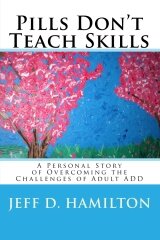By Guest Blogger Marina Salsbury – Often hailed as a “wonder drug” by both parents of kids and children with Attention Deficit Hyperactivity Disorder (ADHD) and college students pulling all-nighters, Adderall is a brand-name amphetamine that is often used “off label.” Although the drug is commonly prescribed to treat ADHD and narcolepsy, it has gathered a following on college campuses from students with a range of objectives including losing weight to getting high or enhancing cognitive functioning to excel in PhD programs. Use of the drug has brought up questions about competition in schools and what exactly constitutes cheating.
According to the Substance Abuse and Mental Health Services Administration’s National Survey on Drug Use and Health, 6.4% of college students have used Adderall off-label. Other studies cite a much higher number, maintaining that non-prescription Adderall use is as high as 35% at some universities. Full-time college students were two times as likely to use the drug in the past year than part-time students or non-students in the same age range. Almost 90% of college students who used the medication in the past thirty days also practiced binge drinking and more than 50% were classified as heavy drinkers. Adderall users under the age of 21 were more likely to use alcohol heavily or binge drink than those who abstained from the drug. College students who had used non-prescribed Adderall were also more likely to have used illegal drugs than those who had not used the drug. According to the New Yorker, male undergraduate students are most likely to use Adderall without a prescription. Fraternity and sorority members and those with a grade point average below 3.0 are also more likely to abuse the drug. Although these statistics are merely correlations, they do provide insight into the demographics who are most likely to use Adderall off-prescription.
Adderall has a high potential for dependence and abuse is therefore considered a Schedule II drug under the Controlled Substance Act. Other potential side effects include loss of appetite, headaches, anxiety, and insomnia. The drug also carries a warning for increased potential for cardiac problems in adults. Many off-label users do not consider these dangerous effects because they likely know someone that has taken the medication since childhood without negative effects.
Pills are often given away to friends by those with a prescription but are also sold for $5 to $15 per pill, depending on the tablet’s dosage. Pill prices can escalate during midterms and finals, selling for as much as $25 each, an expensive habit on a typical college student’s limited budget.
The costs of using Adderall without a prescription are not just physical and financial. Illegal use of the drugs can be grounds for suspension or expulsion at many universities. In most states, possession of the pills without a prescription constitutes a felony offense, resulting in possible jail time, probation and steep fees.
The possible over-prescription of the drug has made Adderall readily available for students in competitive college environments. Some schools, like Duke University, have added use of the medication to its official definition of cheating. For many students, the small advantage of taking Adderall to pull an all-nighterleads to major rewards. For others, the consequences may be life altering physically, financially, and academically.







